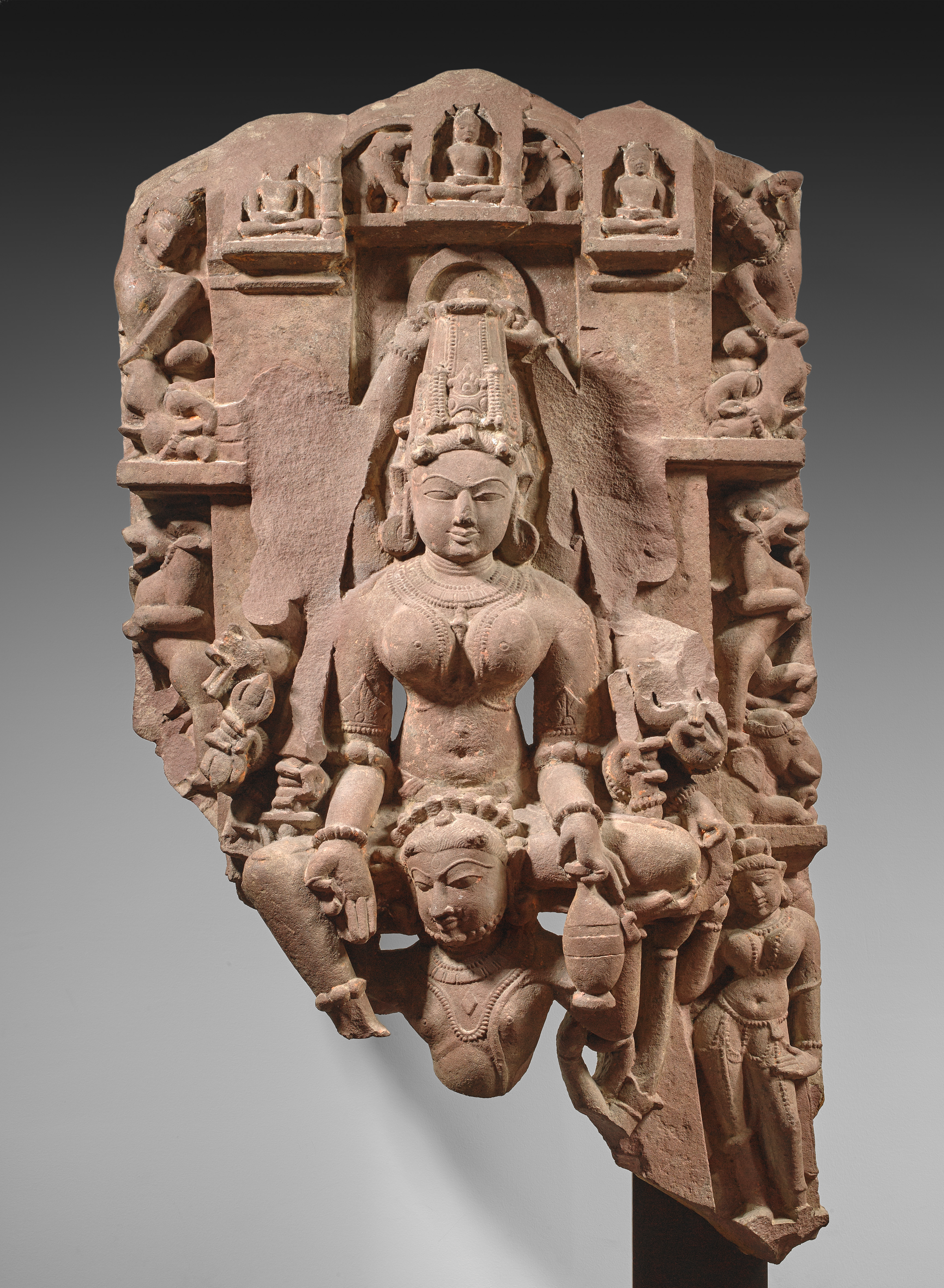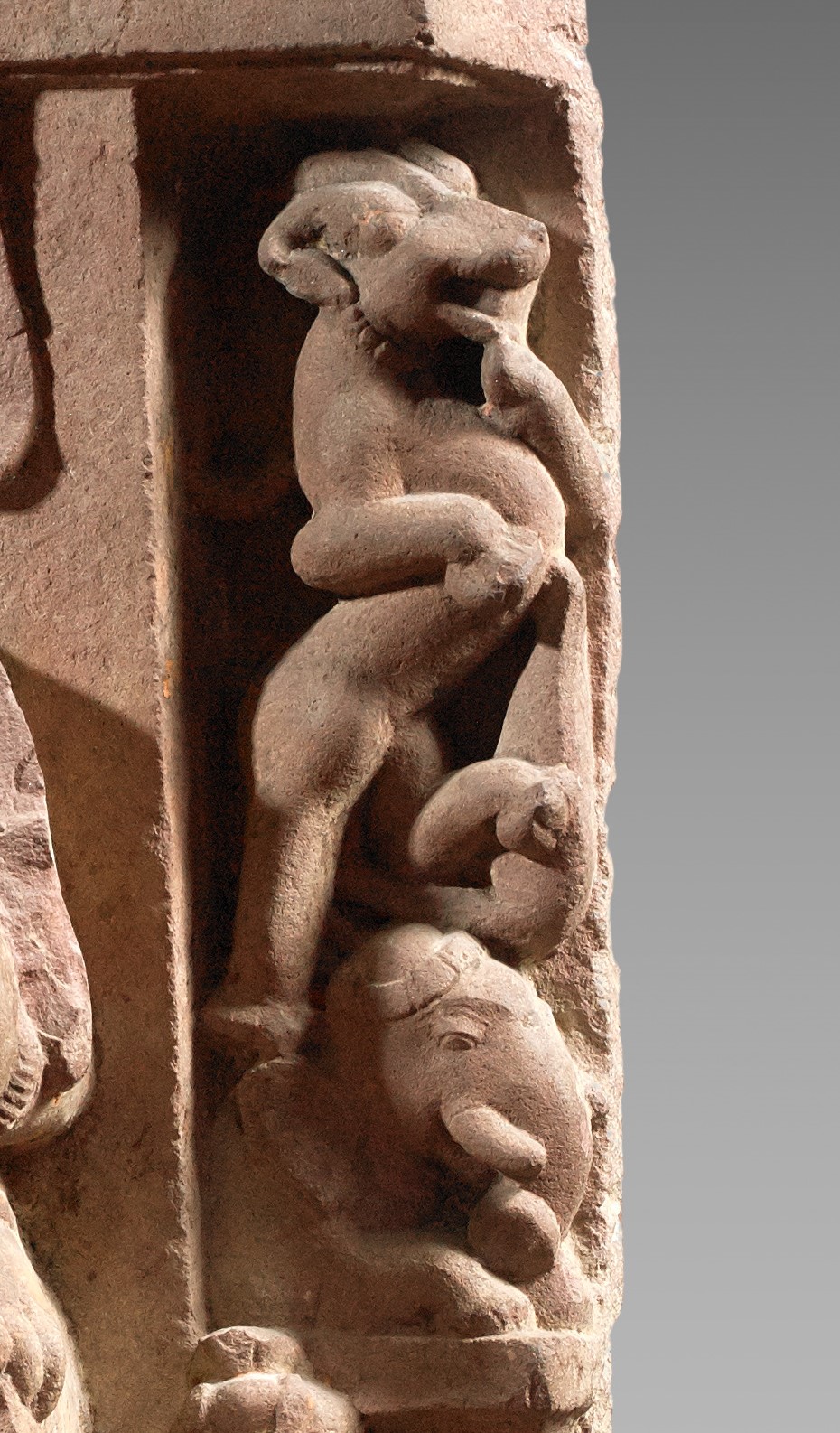Cakreśvarī
Sandstone
Central India
Circa 11th century
H. 105 cm ou 41 ⅜ in
Description
The goddess wears long sleeves and a necklace with a short chain. This jewelry existed in medieval times but was unusual. However, this conclusion should be tempered by the fact that certain sites, such as Khajurāho, whose temples reflect a somewhat royal and prestigious local style, are overly represented in documents. Each region had its own traditions.
It is interesting, nevertheless, to read notice 67, page 181 of the catalogue on Jain Art from India, The Peaceful Liberators by P Pal, L. A. 1995. Cakreśvarī is a goddess linked with the Jain Ṛṣabhanātha, in turn linked with the vaiṣṇava cult. This is borne out by the praying Garuḍa on the bronze piece described by P. Pal, here bearing the goddess.
The crown, the typical headdress of Vishnu (and other masculine deities such as Indra), reinforces this pan-religious relationship, such syncretic trends being very frequent during medieval times.
Cakreśvarī’s mount, Garuḍa, is here represented under a human form, bearing the goddess on his shoulders. Cakreśvarī is wearing with a high tiara, the typical headdress of Viṣṇu (and other masculine deities such as Indra), reinforces this pan-religious relationship, such syncretic trends being very frequent during medieval times. His affiliation with Jainism is indicated by the presence of three Jina sitting above his head, the central Jina being logically Ṛṣabhanātha.
Provenance: Private collection privée, France, acquired in 1987. Art Loss Register Certificate, ref. S00091666.
Exhibition: Step of Liberation, 2500 years of Jain art and religion. Etnograpfisch Museum, Antwerp, 26 May to 15 October 2000.
Publication: Catalogue of the exhibition: p. 163, n° 88.
Bibliography: Pratapaditya Pal, Jain Art from India, the peaceful liberators, 1995, p. 181, notice 67.
















